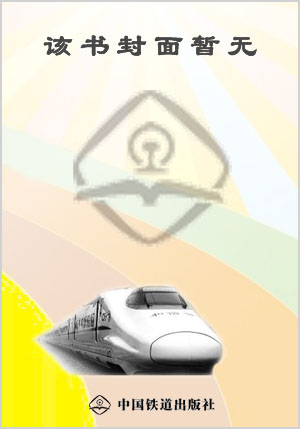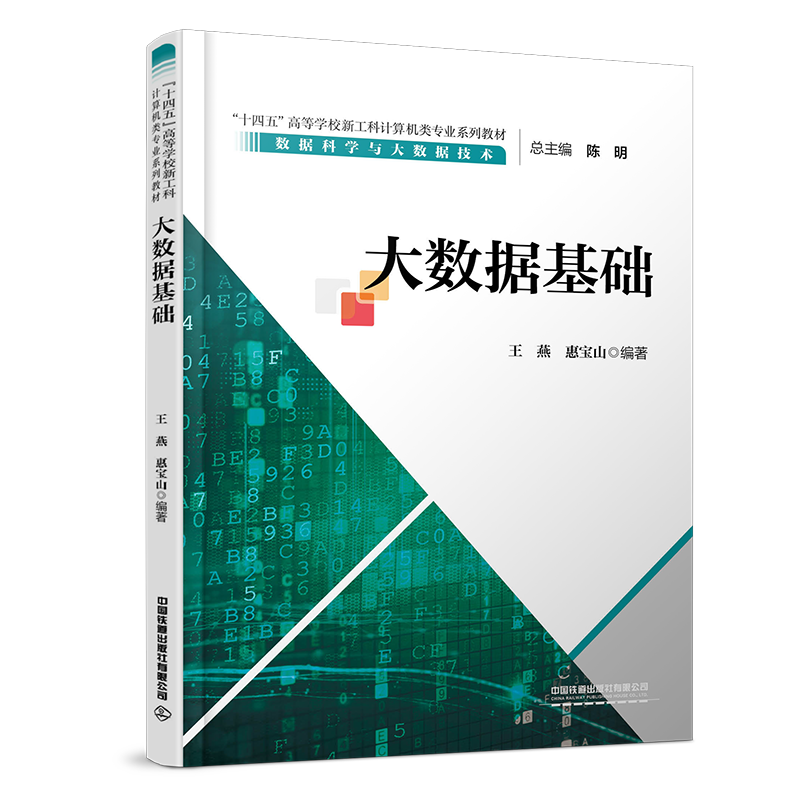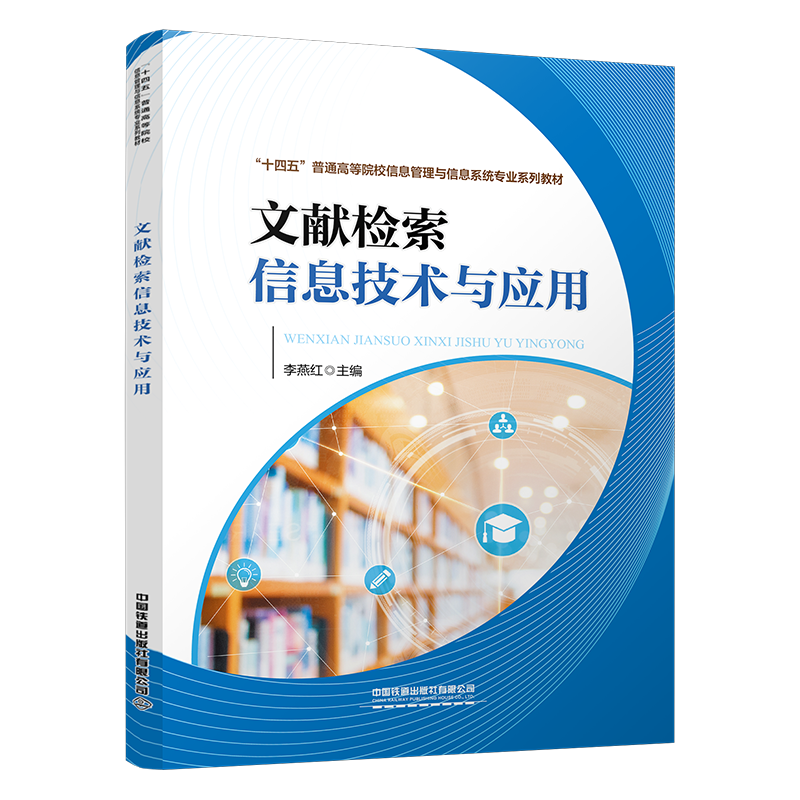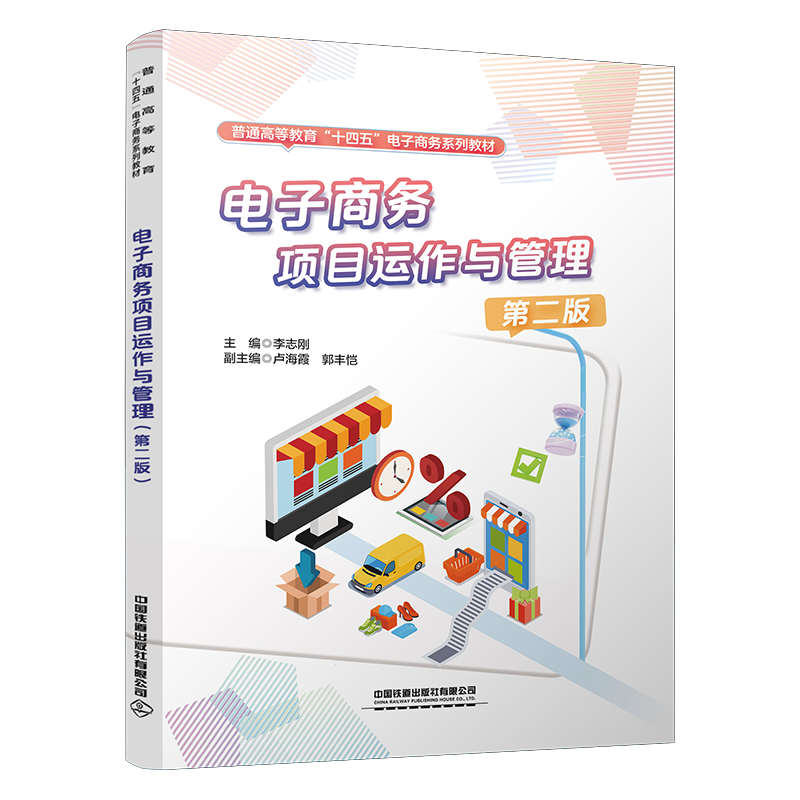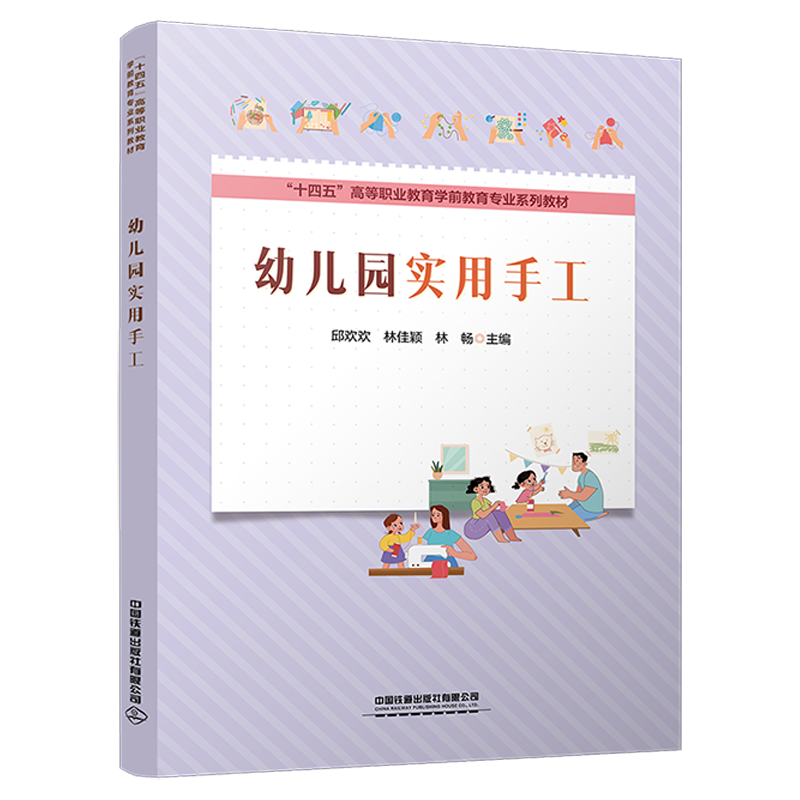计算机英语(第二版)
书 号:9787113130992
丛 书 名:21世纪高等院校计算机专业规划教材
作 者:邱仲潘 朱云贞 等
译 者:
开 本:16开
装 帧:平装
正文语种:
出 版 社:中国铁道出版社有限公司
定 价:32元
-
内容简介
本书共分为20章,每章由正文、关键词和课外阅读等部分组成,此外,每章还提供了参考译文。章节安排既成体系又相互独立,涉及到了硬件、软件、系统、网络、应用程序等计算机相关知识。 -
前言
本书自第一版出版以来,已经有五年时间。五年来,在不断的教学实践过程中,我们感觉到本书一些地方需要改进;同时也从广大教师和学生的反映中发现了一些需要处理的共性问题。为此,经过与出版社编辑多次商议,进行了这次改版。本书共分为20章,每章由正文、关键词、练习和课外阅读等部分组成;此外,每章还提供了参考译文。章节安排既成体系又相互独立,涉及硬件、软件、系统、网络、应用程序等计算机相关知识。本书强调阅读理解,注重专业术语和科技英语的基础语法。对一些难句进行了深入的解析,其中相关知识包括翻译技巧以及技术和语言方面的知识。本书可作为高等院校“计算机英语”课程的教材或教学参考书,也可供有一定英语基础的广大计算机用户学习计算机英语时使用。
计算机技术的发展,最初是从英语国家开始的,英语是计算机的“母语”。从事计算机行业的人,难免会遇到大量英文资料需要阅读,要发表高水平的专业论文也会用到英语。因此,学好专业英语对计算机专业的学生非常重要。即使不是计算机专业的学生,也很难离开计算机,很难不和它的“母语”打交道,因为我们处在信息时代,而计算机是信息时代的“图标”。
本书是针对计算机专业本科三年级学生编写的。计算机专业学生的基本要求是读懂外方的软件需求文档和在编程中根据要求插入简单的注释文本,因此,在本书编写过程中,我们一直认为应该强调阅读理解,强调简单文本写作,强调专业术语与科技英语基础语法。同时,为了提高效率和便于工作中的资料积累与交流,应该介绍一些翻译技巧,使学生能够把看懂的内容用比较准确和流畅的中文表达出来,能够把软件设计与实现中的思路翻译成简单的英文。为此,我们挑选一些难句,在给出准确的翻译的同时选择学生常见的翻译错误进行剖析,增加学生的理解深度。课文后面还用英语提供关键术语的解释,使有兴趣的学生可以了解到许多相关专业知识和有趣的词源知识。相关知识包括翻译技巧以及技术方面和语言方面的知识,非常实用。文章后面还有参考读物,难度略大于课文。建议老师在保证让学生掌握课文内容的前提下,根据学生接受情况和兴趣决定教学内容的深浅。俗话说,兴趣是最好的老师,本教材努力通过各种背景知识和词源知识增加趣味性,老师还可以通过调动学生积极参与课堂教学活动激发学生的学习兴趣,除此之外,也可以鼓励学生自己从网络和其他地方寻找相关资料,扩大视野,并且把学到的专业英语知识应用到其他专业课程的学习中,学以致用,切实体会计算机英语的作用,变“要我学”为“我要学”。对于非计算机专业的学生,本书选择的内容也是值得一看的,因为通过这些文章的学习,不仅可以无语言障碍地和这个信息时代的“图标”打交道,而且可以了解计算机世界许多有趣的故事。
本书1~7章由邱仲潘编写,作者翻译了大量计算机科学图书,积累了许多素材,辅助材料大部分是由邱仲潘提供的;朱云贞同志负责8~12章内容和全书练习的编写;宋智军同志负责13~17章内容的编写;王帅同志负责18~20章内容的编写。在本书写作过程中,刘文红、邹文、邓欣欣、王润涛、周丹丹、朱敏、张朋丽、刘文琼、张艺永等同志也投入了大量精力,在此深表感谢。由于时间仓促,书中难免存在错误和缺漏之处,期待各位老师和同学不吝赐教,以便今后修订时改正和增补。
编 者
2011年6月 -
目录
Chapter 1 Introduction to Computers 2
1.1 What is a computer 2
1.2 The Five Generations of Computers 3
1.2.1 First Generation Computers (1940—1956) 4
1.2.2 Second Generation Computers(1956—1963) 4
1.2.3 Third Generation Computers (1964—1971) 4
1.2.4 Fourth Generation Computers (1971—Present) 4
1.2.5 Fifth Generation Computers (Present and Beyond) 5
Keywords 5
Exercise 6
Additional Reading 7
Text Translation 9
Part 2 Hardwares
Chapter 2 Storage Devices 14
2.1 Introduction to Storage 14
2.2 Storage Devices Types 14
2.2.1 Hard Disks 15
2.2.2 Floppy Disks 15
2.2.3 How Hard and Floppy Disks Work 15
2.2.4 Compact Disks 16
2.2.5 Uses of Floppy Disks 16
2.2.6 Uses of Compact Disks 16
2.3 How Computer Memory Works 17
2.3.1 RAM 17
2.3.2 ROM 18
2.3.3 Cache 19
2.3.4 Flash Memory 20
Keywords 20
Exercise 21
Additional Reading 22
Text Translation 22
Chapter 3 Microprocessors 27
3.1 Microprocessor History 27
3.2 Microprocessor Progression 28
3.3 Inside Microprocessor 29
3.4 Microprocessor Instructions 31
3.5 Decoding Microprocessor Instructions 34
3.6 Microprocessor Performance 34
3.7 Microprocessor Trends 34
3.8 64-bit Processors 35
Keywords 35
Exercise 37
Additional Reading 37
Text Translation 39
Chapter 4 Input Devices 47
4.1 Computer Mouse 47
4.1.1 Evolution 47
4.1.2 The Optical Mouse 48
4.2 Keyboard 49
4.2.1 Evolution 49
4.2.2 Keyboard Type 51
Keywords 52
Exercise 53
Additional Reading 53
Text Translation 55
Chapter 5 Output Devices 59
5.1 The Basics 59
5.2 Display Technology Background 59
5.3 Display Technology: VGA 60
5.4 Display Technology: DVI 60
5.5 Viewable Area 61
5.6 Maximum Resolution and Dot Pitch 61
5.7 Refresh Rate 62
5.8 Color Depth 63
5.9 Power Consumption 63
5.10 Monitor Trends: Flat Panels 64
Keywords 64
Exercise 65
Additional Reading 65
Text Translation 70
Part 3 Softwares
Chapter 6 Application Software 76
6.1 What is Application Software 76
6.2 Programming Languages 76
6.2.1 Assemblers 76
6.2.2 Compilers and Interpreters 77
6.2.3 Nonprocedural Languages 77
6.3 Libraries 78
6.4 The Program Development Process 78
6.4.1 Problem Definition 79
6.4.2 Planning 79
6.4.3 Writing the Program 79
6.4.4 Debug and Documentation 80
6.4.5 Maintenance 80
6.5 Writing your Own Programs 80
Keywords 80
Exercise 81
Additional Reading 81
Text Translation 84
Chapter 7 Compiler 88
7.1 Introduction to Compiler 88
7.2 Introduction and History 88
7.3 Types of Compilers 89
7.4 Compiled vs. Interpreted Languages 90
7.5 Compiler Design 90
7.6 Compiler Front End 91
7.7 Compiler Back End 91
7.8 Notes 91
7.9 References 92
Keywords 92
Exercise 93
Additional Reading 93
Text Translation 99
Chapter 8 How Java Works 103
8.1 A Little Terminology 103
8.2 Downloading the Java Compiler 104
8.3 Your First Program 105
8.4 Understanding What Just Happened 107
Keywords 109
Exercise 110
Additional Reading 110
Text Translation 115
Chapter 9 Positioning Visual C++ in the Desktop Database Market 121
9.1 Introduction 121
9.2 Note 121
9.3 Choosing Visual C++ as Your Database Development Platform 122
Keywords 124
Exercise 124
Additional Reading 125
Text Translation 132
Part 4 Database
Chapter 10 Introduction to Database 136
10.1 Architecture 136
10.2 Database Management Systems 136
10.2.1 RDBMS Components 136
10.2.2 ODBMS Components 137
10.3 Models 137
10.3.1 Post-relational Database Models 137
10.3.2 Object Database Models 137
10.4 Storage Structures 138
10.5 Indexing 139
10.6 Transactions 139
10.6.1 The ACID Rules 139
10.6.2 Concurrency Control and Locking 140
10.7 Replication 141
10.8 Security 141
Keywords 141
Exercise 142
Additional Reading 142
Text Translation 146
Chapter 11 Databases 151
11.1 Operational Database 151
11.2 Data Warehouse 151
11.3 Analytical Database 152
11.4 Distributed Database 153
11.4.1 Homogenous Distributed Database Systems 153
11.4.2 Heterogeneous Distributed Database Systems 154
11.4.3 Client/Server Database Architecture 154
11.5 End-user Database 155
11.6 External Database 155
11.7 Hypermedia Databases 155
Keywords 155
Exercise 156
Additional Reading 156
Text Translation 160
Part 5 Network and Security
Chapter 12 Internet Infrastructure 166
12.1 A Network Example 167
12.2 Bridging the Divide 167
12.3 Backbones 167
12.4 Internet Protocol: IP Addresses & Domain Name System 168
12.5 Uniform Resource Locators 169
12.6 Clients ,Servers and Ports 169
Keywords 170
Exercise 171
Additional Reading 172
Text Translation 174
Chapter 13 How DSL Works 178
13.1 Telephone Lines 178
13.2 Asymmetrical DSL 179
13.3 Distance Limitations 179
13.4 Splitting the Signal: CAP 180
13.5 Splitting the Signal: DMT 180
13.6 DSL Equipment 181
13.7 DSL Equipment: Transceiver 182
13.8 DSL Equipment: DSLAM 182
Keywords 182
Exercise 183
Additional Reading 183
Text Translation 186
Chapter 14 How Internet Search Engines Work 190
14.1 Looking at the Web 190
14.1.1 An Itsy-Bitsy Beginning 190
14.1.2 Meta Tags 192
14.2 Building the Index 192
14.3 Building a Search 194
14.4 Future Search 194
Keywords 195
Exercise 195
Additional Reading 196
Text Translation 200
Chapter 15 Encryption 205
15.1 In the Key of... 205
15.1.1 Symmetric Key 205
15.1.2 Public Key 206
15.2 Hash This 207
15.3 Are You Authentic 207
Keywords 209
Exercise 209
Additional Reading 210
Text Translation 218
Chapter 16 Taking a Closer Look at the DCE 222
16.1 Common Threads 222
16.2 Remote Calls 223
16.3 Directory Services 223
16.4 Distributed Security Service 224
16.5 Distributed File System 224
16.6 Distributed Time Service 225
16.7 Extending and Using the DCE 225
Keywords 225
Exercise 226
Additional Reading 226
Text Translation 235
Part 6 Applications
Chapter 17 Artificial Intelligence 240
17.1 Overview 240
17.2 Strong AI and Weak AI 240
17.2.1 Strong Artificial Intelligence 240
17.2.2 Weak Artificial Intelligence 241
17.2.3 Philosophical Criticism and Support of Strong AI 241
17.3 History 242
17.3.1 Development of AI Theory 242
17.3.2 Experimental AI Research 243
17.4 Practical Applications of AI Techniques 244
Keywords 245
Exercise 246
Additional Reading 246
Text Translation 250
Chapter 18 Neural Network 255
18.1 Structure 255
18.1.1 Models 256
18.1.2 Calculations 256
18.2 Advantages 256
18.3 Applications 257
18.3.1 Usefulness 257
18.3.2 Real Life Applications 257
18.4 Types of Neural Networks 257
18.4.1 Single-layer Perceptron 257
18.4.2 Multi-layer Perceptron 258
18.4.3 Recurrent Network 260
18.4.4 Hopfield Network 260
18.4.5 Boltzmann Machine 260
18.4.6 Committee of Machines 260
18.4.7 Instantaneously Trained Networks 261
18.4.8 Spiking Neural Networks 261
18.5 Relation to Optimization Techniques 261
Keywords 261
Exercise 262
Additional Reading 262
Text Translation 269
Chapter 19 Shockwave 3-D Technology 275
19.1 Uses of Shockwave Technology 276
19.2 Making 3-D Content Accessible 277
19.3 Developing New 3-D Content 279
Keywords 279
Exercise 280
Additional Reading 280
Text Translation 286
Chapter 20 How PlayStation Works 289
20.1 History 289
20.2 Console 290
20.3 Controller 291
20.4 Games 293
Keywords 294
Exercise 294
Additional Reading 295
Text Translation 303
References 306 -
作者介绍
主要著译者顺序姓名学历职称学科专长通讯地址1邱仲潘 硕士副教授 计算机图书翻译、计算机应用技术、人工智能技术 工作单位 厦门大学邮政编码 361012 电话13906048343 2 工作单位 邮政编码 电话 3 工作单位 邮政编码 电话 审校者(主审者) 学历 工作单位 邮政编码 电话 职称 工作单位 邮政编码 电话 -
编辑推荐
本书强调阅读理解,注重专业术语和基本科技英语的语法。对一些难句进行了深入的解析,其中相关知识包括翻译技巧以及技术和语言方面的知识。 -
书评书荐
-
附件下载
图书推荐
